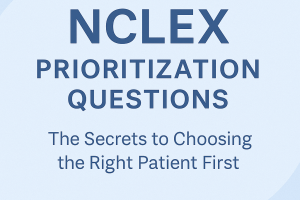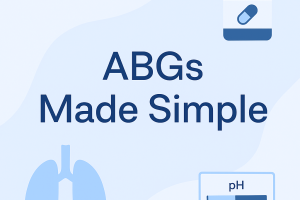NEONATAL CARE: APGAR SCORING AND COMMON COMPLICATIONS.

Neonatal care is a critical part of ensuring the health and safety of newborns. This phase encompasses thorough assessments immediately after birth to monitor adaptation to life outside the womb. One widely recognized assessment tool in neonatal care is the APGAR score, which helps healthcare professionals quickly assess a newborn’s overall condition. In addition, understanding common neonatal complications enables caregivers and medical staff to respond promptly to any immediate concerns. This post will provide an in-depth look at APGAR scoring, common complications, and interventions essential to neonatal care.
1. What is APGAR Scoring?
The APGAR score, developed by Dr. Virginia Apgar in 1952, is a quick and efficient way to assess a newborn’s health immediately after birth. This scoring system evaluates five crucial areas: Appearance (skin color), Pulse (heart rate), Grimace response (reflexes), Activity (muscle tone), and Respiration (breathing effort). Each area is scored from 0 to 2, with a maximum score of 10. This assessment is typically performed at one minute and five minutes after birth to help identify any immediate care needs.
A score between 7 and 10 is generally considered normal, indicating the baby is adapting well. A score between 4 and 6 may indicate moderate difficulties, often requiring additional observation or interventions. Scores of 3 or lower signal severe distress, necessitating immediate and intensive medical care. The APGAR score does not predict long-term health but provides essential insights into the newborn’s initial condition.
2. Common Complications in Neonatal Care
Newborns may face a variety of complications that require close monitoring and timely intervention. Here are some common conditions encountered in neonatal care:
a. Respiratory Distress Syndrome (RDS): Often seen in preterm infants, RDS occurs when the baby’s lungs lack surfactant, a substance that helps keep the lungs open. Symptoms include rapid, shallow breathing, and a bluish skin color. Treatment often involves providing supplemental oxygen, continuous positive airway pressure (CPAP), or mechanical ventilation. Some infants may also receive surfactant replacement therapy.
b. Hypoglycemia: This condition occurs when a newborn’s blood sugar levels are too low, which can lead to symptoms such as jitteriness, lethargy, and seizures. Hypoglycemia is more common in babies born to mothers with diabetes, preterm infants, and those who experienced birth asphyxia. Treatment may include feeding the baby immediately or providing glucose intravenously if needed.
c. Jaundice: Jaundice, a yellowing of the skin and eyes, occurs when there is an excess of bilirubin in the blood. This is common in newborns, especially premature babies. If left untreated, high bilirubin levels can cause brain damage. Treatment often includes phototherapy, where the baby is placed under special blue lights to help break down bilirubin.
d. Neonatal Sepsis: Sepsis is a severe infection that can spread throughout the body, causing symptoms like poor feeding, temperature instability, and respiratory issues. Risk factors include preterm birth, maternal infections, and prolonged rupture of membranes. Treatment involves antibiotics and close monitoring.
3. Nursing Interventions in Neonatal Care
Nurses play a key role in the early care of newborns, especially in identifying and addressing potential complications. Key interventions include:
• Monitoring Vital Signs: Routine assessment of heart rate, respiratory rate, and temperature is essential to detect any deviations early. Prompt attention to irregularities can prevent complications from escalating.
• Supporting Breathing and Oxygenation: For babies with respiratory distress, nurses may administer oxygen, assist with CPAP or ventilation, and ensure the correct positioning to promote optimal breathing.
• Feeding Support: For infants unable to breastfeed due to low blood sugar or other issues, nurses may offer alternatives such as formula or tube feeding and educate parents on safe feeding practices.
• Jaundice Management: Nurses are often responsible for positioning newborns under phototherapy lights and monitoring bilirubin levels to ensure treatment effectiveness. Parents are educated on how to identify jaundice and the importance of follow-up care.
• Infection Prevention: Proper hand hygiene, sterile techniques, and routine screenings are vital for preventing and managing infections. Nurses also monitor for signs of sepsis and initiate treatment when necessary.
Questions for Review
Q1: What does a low APGAR score indicate, and what interventions might be necessary?
A low APGAR score (3 or below) indicates severe distress. Interventions may include resuscitation, oxygen therapy, or other emergency measures to stabilize the newborn.
Q2: Why are preterm infants more likely to experience respiratory distress syndrome?
Preterm infants are more prone to respiratory distress syndrome because their lungs may not yet have produced enough surfactant, which is necessary for proper lung function and breathing.
Q3: What is the primary treatment for neonatal jaundice, and how does it work?
The primary treatment for neonatal jaundice is phototherapy, which uses special blue lights to break down excess bilirubin in the baby’s blood, helping to reduce jaundice.
CONCLUSION:
This post provides a comprehensive overview of APGAR scoring and common complications in neonatal care, equipping both healthcare professionals and parents with vital knowledge for the early days of a newborn’s life.






